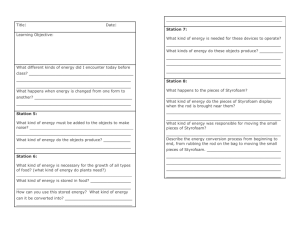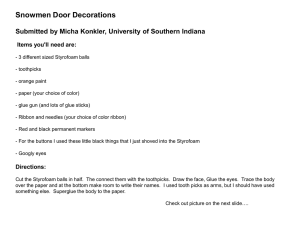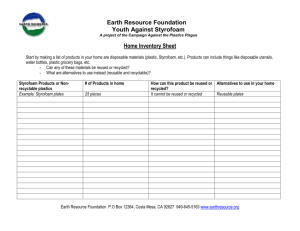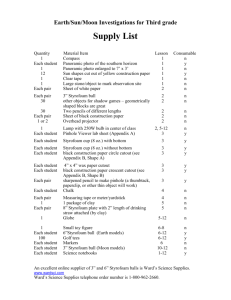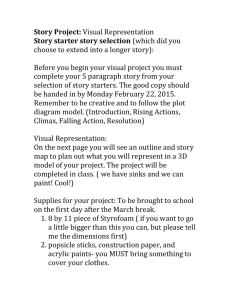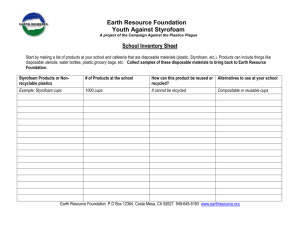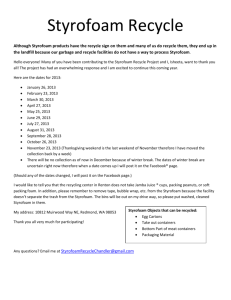Print making with patterns Time: approx. 2
advertisement
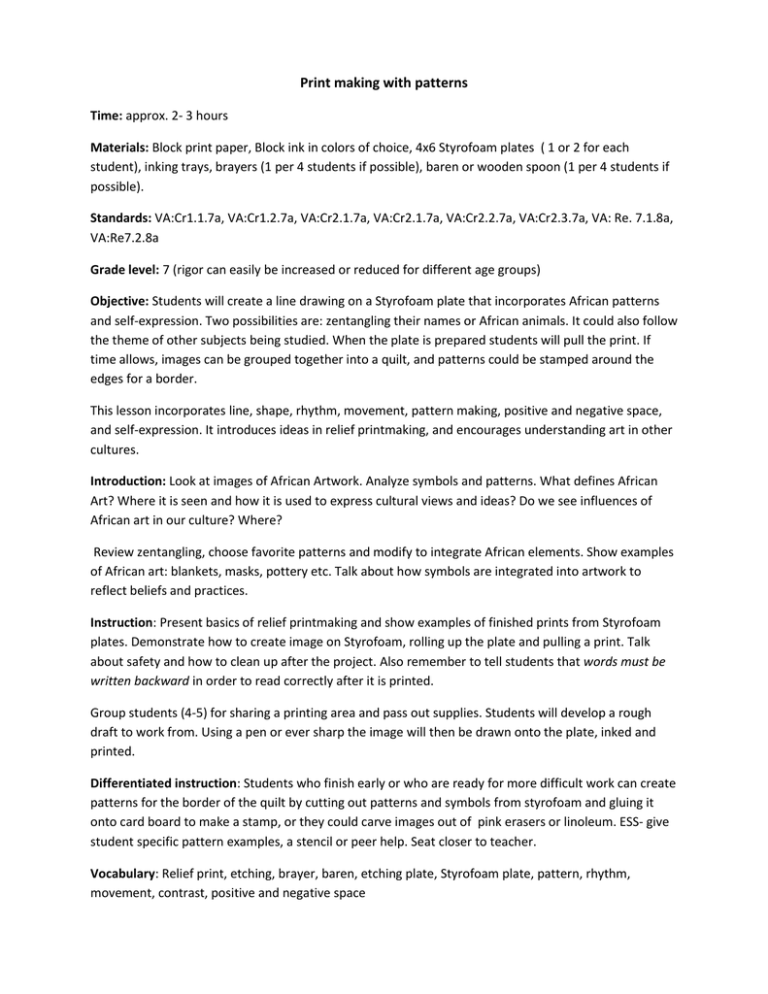
Print making with patterns Time: approx. 2- 3 hours Materials: Block print paper, Block ink in colors of choice, 4x6 Styrofoam plates ( 1 or 2 for each student), inking trays, brayers (1 per 4 students if possible), baren or wooden spoon (1 per 4 students if possible). Standards: VA:Cr1.1.7a, VA:Cr1.2.7a, VA:Cr2.1.7a, VA:Cr2.1.7a, VA:Cr2.2.7a, VA:Cr2.3.7a, VA: Re. 7.1.8a, VA:Re7.2.8a Grade level: 7 (rigor can easily be increased or reduced for different age groups) Objective: Students will create a line drawing on a Styrofoam plate that incorporates African patterns and self-expression. Two possibilities are: zentangling their names or African animals. It could also follow the theme of other subjects being studied. When the plate is prepared students will pull the print. If time allows, images can be grouped together into a quilt, and patterns could be stamped around the edges for a border. This lesson incorporates line, shape, rhythm, movement, pattern making, positive and negative space, and self-expression. It introduces ideas in relief printmaking, and encourages understanding art in other cultures. Introduction: Look at images of African Artwork. Analyze symbols and patterns. What defines African Art? Where it is seen and how it is used to express cultural views and ideas? Do we see influences of African art in our culture? Where? Review zentangling, choose favorite patterns and modify to integrate African elements. Show examples of African art: blankets, masks, pottery etc. Talk about how symbols are integrated into artwork to reflect beliefs and practices. Instruction: Present basics of relief printmaking and show examples of finished prints from Styrofoam plates. Demonstrate how to create image on Styrofoam, rolling up the plate and pulling a print. Talk about safety and how to clean up after the project. Also remember to tell students that words must be written backward in order to read correctly after it is printed. Group students (4-5) for sharing a printing area and pass out supplies. Students will develop a rough draft to work from. Using a pen or ever sharp the image will then be drawn onto the plate, inked and printed. Differentiated instruction: Students who finish early or who are ready for more difficult work can create patterns for the border of the quilt by cutting out patterns and symbols from styrofoam and gluing it onto card board to make a stamp, or they could carve images out of pink erasers or linoleum. ESS- give student specific pattern examples, a stencil or peer help. Seat closer to teacher. Vocabulary: Relief print, etching, brayer, baren, etching plate, Styrofoam plate, pattern, rhythm, movement, contrast, positive and negative space
